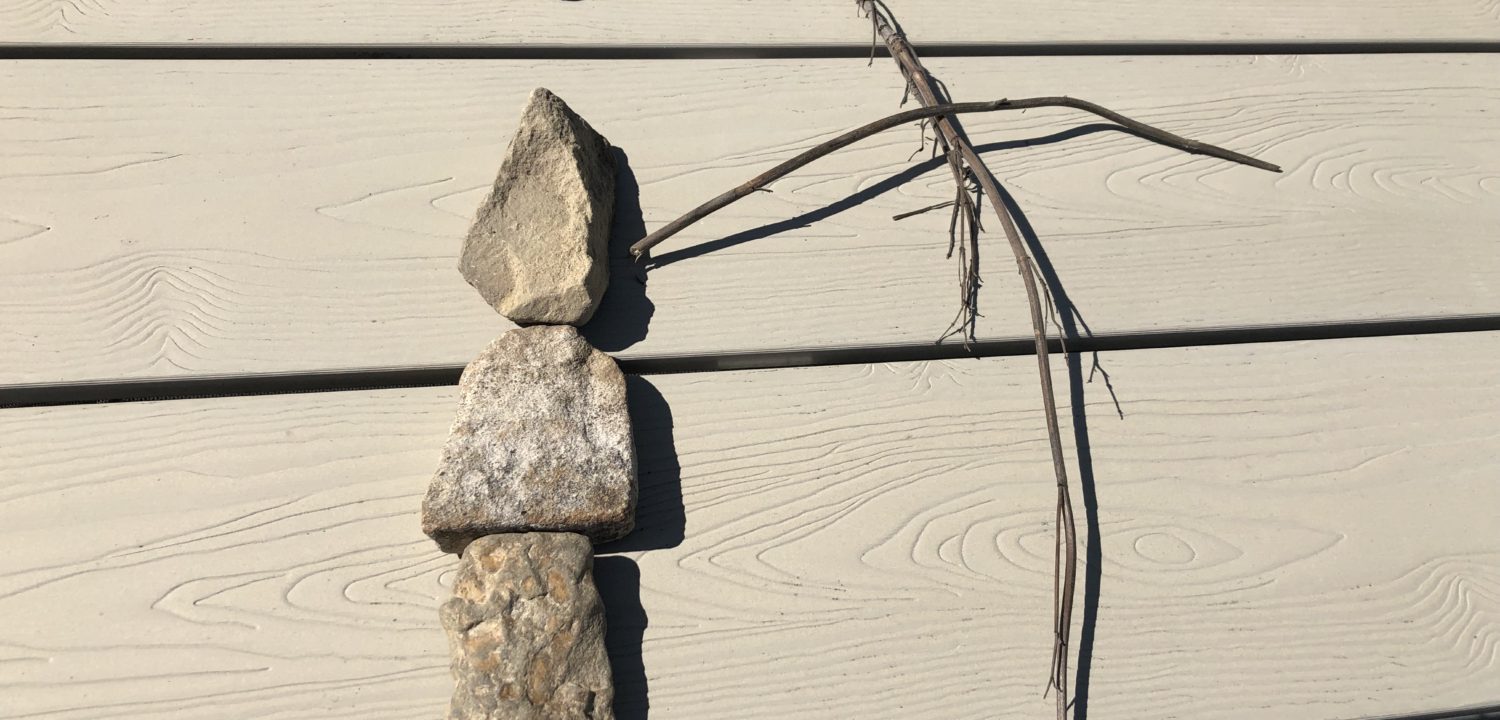Earth-Friendly Elementary Classroom: 5 Tips
Mother Nature is calling on us to make changes to the way we interact with the world. We try to use less water, be mindful of what we throw away, turn off the lights, and generally be good stewards of what we have.
I must confess, though – All my efforts to be good to the earth tend to stop when I enter the school building! I find myself throwing away stacks of worksheets I copied and never used or throwing away perfectly good materials that no longer fit my style. It’s always made me cringe, because I strive to model what I hope to see from my students.
After reading Zero Waste Home (which was at the same time wonderful, inspiring, and so completely overwhelming that I began reading it in small chunks…), I decided to start a list of ways I could reduce waste in my classroom. In addition to helping me do my part for the environment, I have become mindful of my educational choices (after all, I want students to be creating with what they learn more often than they are completing a rote practice worksheet). In the long run, this is also way better for my finances, because I’m not as drawn to the Dollar Spot at Target (well… at least not as frequently!).
Each of these ideas is simple and easy to implement. I found it even improved my instruction. I started with trying just one thing (a scrap bin, because I had an extra crate!). If we each implement one new idea every month, who knows how far we can go!? So here are 5 tips that have worked for me. I’d love to know what works for you!
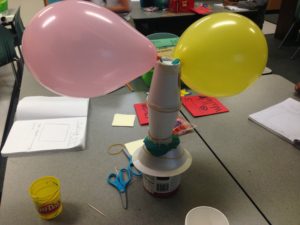
Tallest Tower Challenge
Use Fewer Worksheets
Have you heard of a week without worksheets? This might be a great place to start if this is your first step into using less paper in your classroom.
I am generally not a worksheet person (though I do believe in the importance of practicing particular skills), and I still find I go through a lot of paper! I ask myself every time I’m standing at the copy machine whether those copies are essential. It’s a strange habit that has actually caused me to put down the workbook and step away! My teaching improved dramatically when I started asking this question each day.
A Few Replacements for Worksheets:
- Writing Workshop: Students spend most of their time writing. I almost never use worksheets for this.
- Reading Workshop: Students spend most of their time reading books that they’ve chosen. Very few copies needed, and huge growth in reading skills.
- Science: 5E Lessons have been a game changer for me. Simply and practically speaking though, I just try to think of ways I can get the children to drive their learning. When I want to teach the scientific method, I create a problem to be solved. What should we use for cleaning up water spills in our classroom? Test out various brands of paper towels or compare paper towels to cloth towels.
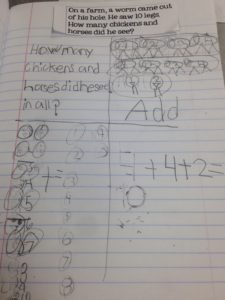
Interactive notebook for problem solving… and I only photocopied 2 pages!
Reduce Paper Use
A few years ago, I learned about Interactive Notebooks, and it changed my teaching forever. No longer did I feel the need to print a full worksheet just so students would have the task at the top of the page and plenty of space for their thinking. I’m cringing just thinking about how many almost blank pieces of paper I printed while notebook pages sat unused!
Here are a few ways I handle this now:
- Type the task multiple times on a sheet of paper. Cut it out, and have students glue it into their Interactive Notebooks.
- Print the task on each side of a piece of paper. Fold the paper into a table tent. Use for learning centers or group work
- Have students create the task on whiteboards, solve a partner’s task, then check and compare answers
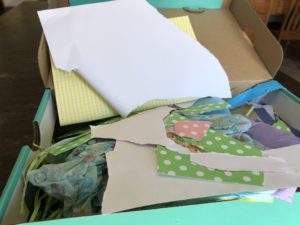
Class Scrap Box
Have a Class Scrap Box
Put extra paper of all sizes into a scrap box. In younger grades, I split the scrap box into big pieces and smaller pieces. In upper elementary, we just mix it all together. We use paper from the box for any crafts, posters, practice work, etc.

Practicing Sight Words With Rocks And Sticks
Incorporate Recycled and Natural Materials
My son taught me this one! He is forever creating experiments using supplies he’s found in the yard or on a walk. We take a collection bucket outside with us most of the time, and we bring in whatever he finds that we may need.
In the younger grades, sticks make great tools for building letters, loose parts, and math manipulatives (acorns work just as well as erasers from the Dollar Spot… and you have the benefit of counting them when you come inside).
In upper elementary, these materials can be used for a STEAM cooperative learning challenge. Put various materials on the table and invite students to create the strongest structure, tallest structure, or a structure that can do something. My students made some incredibly strong structures using only materials they found in our classroom recycling bin.
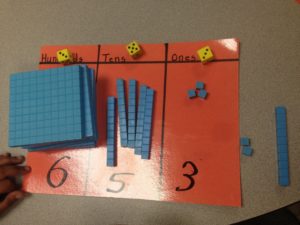
Place Value Practice With Dice, Base-10 Blocks, & A Laminated Place Value Mat
Practice with Games
Some things just have to be memorized – math facts, spelling rules, important dates, etc. These are things we just have to know. I try to embed this practice into classroom games, which typically increases movement, reduces time, and reduces paper!
I use Match It games during Morning Meeting or as a way to form groups. These games use just a couple pieces of paper for the whole class, and we reuse them frequently throughout the year. They are also great as exit tickets (ex: tell me the sum, then line up).
There are lots of math games that can be played with dice, decks of cards, and other materials we have in the classroom. I try to use these as much as possible for review and warm ups, so we’re just using a worksheet for our weekly assessments.
BONUS! Use Recycled Materials for Classroom Storage
I have no idea why it’s taken me so long to figure out how wonderful shoeboxes are for storage! They are easily decorated (and can be a great group project for your students at the start of the year), and are basically the same size as the containers I tend to use for craft supplies. It’s important to label them clearly (and draw a picture if your students aren’t reading yet), because they aren’t clear like the storage containers I usually use. However, they are PERFECT for storing stickers, small containers of glitter, extra pencils, etc.
Diaper boxes are my other new favorite storage system. Depending on the size, they’re great for storing paper, notebooks, and games for learning centers. These can be trickier to redecorate in an eco-friendly way, because they often have a shiny coating that isn’t easy to paint. Tape is one way to cover it, and recycled paper is another. This is a great use for those copies I know I’m not going to use and would typically throw away. If you’re less picky than I am, just using the box as it is would probably be the best option!


